THE LUMIERE BLOG
9 Ways to Dominate Marketing in Less Time
John Rampton, founder of the calendar productivity tool Calendar offers 9 tips on succeeding in marketing without cutting corners. Not surprisingly, outsourcing is towards the top of the list! The remainder of the suggestions are spot on as well.
"A growing business may feel like it doesn't have the bandwidth to accommodate marketing, but without marketing, it will stop growing. By taking a few steps to make marketing an incremental effort, you can ensure you get your company's name out without taking time away from the business itself."
How to Find Photos for Your Blog Posts
Mitt Ray, Founder of the site Social Media Writing provides the reasoning behind, suggestions and a number of resources to use to find quality photos to use in your blog post.
"Adding images can also help your content get more backlinks as found by Moz. This can boost traffic from SEO as backlinks play a key role in your posts’ search engine performance."
5 Crucial Ingredients of a Successful B2B Digital Marketing Strategy
Vikas Chawla, Co-Founder of the offshore agency Social Beat offers 5 great recommendations for companies looking to build a strong reputation online. Delivering effective content that demonstrates thought leadership is obvious but some of the other recommendations are refreshingly simple and fresh compared to most available information.
"Digital marketing represents huge potential for the B2B space to expand their client base and grow their business. With these strategies, your brand can develop a strong and credible online presence to drive greater results"
A Simple Guide to Establishing a Content Strategy
You have a fantastic product or service. Great, that’s step one. Step two is finding a way to effectively tell the world about it, but demonstrating your skills or subject matter expertise to prospective customers is not always easy. You must be persuasive, professional, and methodical with your strategy in order to ensure buyers chose your company over that of your competitors. Our experts have seen that delivering consistent, engaging content through the proper channels offers you the best chance of improving your buyers’ experience and therefore successfully converting those buyers into new clients.
Here we have outlined the steps we recommend to successfully establish a content strategy:
Steps to Establish a Content Strategy
1) Define Your Customer
Determine your ideal client profile by evaluating the problem or pain point buyers are looking to solve and establish how your product or service can offer a solution to their problem. When you know who your ideal clients are you can tailor your marketing campaigns around their specific needs and desires.
2) Create a Campaign
If your content is properly focused and valuable, it will create awareness and attract your target client, but after they consume your content, what's next? Make sure to plan the next step by presenting a call-to-action or an offer that gives your prospects a chance for further engagement and nurturing.
A call-to-action (CTA) is a tactic designed to provoke an immediate response. Such as, “Sign up now,” “Get Started!” or “Learn More.” Call to actions can be displayed in a clickable format that directs your prospects to a form where they enter their contact information.
Offers are a tool for lead generation, without them, businesses have difficulty converting visitors into leads. Offers should be high-quality and valuable to your target audience, enough to convince them to fill out a form and provide their information.
3) Identify Keywords
Identify both broad and long-tail keywords to incorporate into your content to rank for keywords that matter to your Ideal Client. For example, if you own a carpet cleaning business a broad search keyword might be “carpet” but a long-tail keyword is a phrase specific to your prospective clients such as “carpet pet stain removal service” or “pet stain carpet cleaner.” Check out Google Keyword Planner to identify effective keywords relevant to your product or service with high search volume.
4) Establish an Editorial Calendar
Editorial calendars are used by small businesses, publishers, and bloggers to schedule content across different media, such as newspaper, social media, and email or print newsletters. Editorial calendars are more than just a platform for publishing dates. A successful editorial calendar maps content and schedules resources, offers, and channels.
5) Create a Workflow
Now that you have defined your ideal client profile, created a campaign, identified keywords, and established an editorial calendar, you are ready to create a workflow. This involves designing and implementing landing and thank you pages, email workflows (automated responses) and, lead scoring. Workflow tools such as HubSpot or Autopilot offer easy-to-use templates and the ability to create beautiful, personalized workflows--customized to fit your ideal clients in every stage of the buyer’s journey.
6) Measure and Adjust
Now that everything is off and running, you might be wondering how do you ensure your content strategy investment is actually profitable. Not to worry, most workflow tools make it easy to track and measure a multitude of data Including how many people are opening your emails, what offers generate more leads, how many leads are converting to clients, etc. Get together with your team and show them the results of your efforts. Decide what’s working and what’s not, and adjust your workflow accordingly.
Final Thoughts
Creating a Content Strategy and building a campaign may seem like daunting tasks at first, but after doing a little homework you will find it all comes down to figuring out what your ideal client is looking for and then designing your workflow and content around that information. Check out tools such as HubSpot or Autopilot to help you build beautifully customized offers, collaborate with your internal team for campaign ideas, poll your existing clients to see what products or services they are looking for the most, and consult experts for advanced advice if needed. Most importantly, don’t worry that your content strategy won’t attract buyers, like the saying goes, “If you build it, they will come.”







